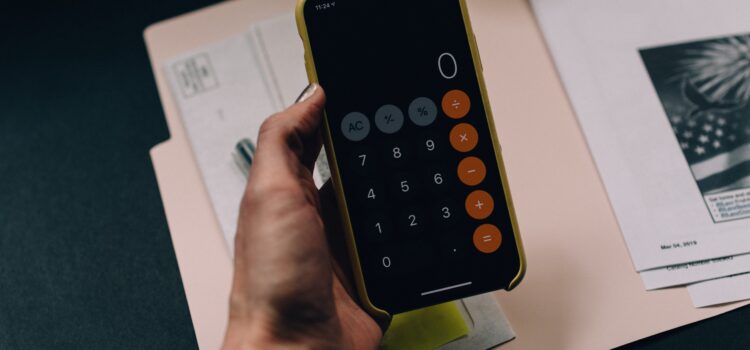

This article is an excerpt from the Shortform book guide to "The Barefoot Investor" by Scott Pape. Shortform has the world's best summaries and analyses of books you should be reading.
Like this article? Sign up for a free trial here .
What are the three The Barefoot Investor buckets? What is the purpose of each bucket?
In his book The Barefoot Investor, Scott Pape recommends distributing your take-home income over three buckets: blow, grow, and backstop. The blow bucket consists of money for day-to-day expenses, the grow bucket houses your long-term investment money, and the backstop bucket fund is reserved for emergencies.
Here is an overview of each of The Barefoot Investor buckets.
The Barefoot Investor Buckets Explained
Struggling with personal finance management? The Barefoot Investor buckets strategy will help you get on top of your finances. Under this strategy, you’ll put money from your take-home pay into three main buckets:
- Blow
- Grow
- Backstop
The Blow Bucket
This category consists of money that you’ll spend on a daily basis, as well as savings you’ll put away for longer-term purchases. Each month, your take-home pay will be deposited in your Day-to-Day account (In Australia, one of your two ING Everyday Orange accounts). Then, you’ll redirect some of it into your other accounts.
In general, aim to spend only 60 percent of your take-home pay on essentials, like bills, shelter, food, transportation, and insurance. This will leave you 40 percent to put toward other purposes.
Here’s how it’ll work—each time you’re paid, have your Day-to-Day account automatically direct:
- 10 percent to your Treat account.
- 10 percent to your Happy account.
- 20 percent to your Fire account.
10 Percent: Treat Account
You’ll use your Treat account (your other ING Everyday Orange account) for treating yourself regularly to whatever you like to buy. Maybe it’s pumpkin spice lattes, or new clothes.
Since it’s a debit account, it comes with its own card. Write Treat on it with a Sharpie so that you can tell it apart from your Day-to-Day spending card. Remember: Once you’ve used up your Treat dollars for the month, you’re not allowed to dip into other accounts for that purpose. You’ll have to wait until next month.
10 Percent: Happy Account
The money directed to your Happy account (a savings account) allows you to save for bigger expenses that you can’t buy with one paycheck, like a vacation. In other words, you’re saving to make a larger-than-normal purchase that brings happiness to your life.
Depending on what you’re saving for, you may want to increase or decrease the percentage you direct toward this account. For example, if you’re saving for a $1,200 plane ticket to Tokyo, and you want to buy it in three months, you’ll need to put $400 dollars in your Happy account for three months to reach that goal. If you normally only put $300 per month toward this account, you’ll have to modify your other monthly expenses. For example, you could divert a smaller portion of your take-home pay into your Treat account, putting the remainder in your Happy account instead.
20 Percent: Fire Account
You’ll use the money in this account to deal with “financial fires.” Financial fires are anything you want to concentrate a good chunk of money on paying for, such as eliminating credit card debt or student loans. It could also include larger expenses than you’d normally save for in your Happy account, such as a downpayment on a home.
The Grow Bucket
This category consists of your long-term savings: your money for your super, as well as any investments you own, like rental properties or shares. In Steps 6 and 9, you’ll learn more about how to manage this category of savings.
The Backstop Bucket
Backstop is an account that holds money separately from the Blow and Grow category. It is both its own spending category (like Blow and Grow) as well as a separate bank account. In Step 1, you should have deposited $2,000, but if you haven’t yet done so, find some creative ways to get that money in there, like working overtime or selling some belongings.
Because your Backstop money is at another bank, it should feel mostly off-limits, unless you need it in an emergency, like getting laid off from your job.
From Theory to Action: Visualizing The Barefoot Investor Buckets
To visualize The Barefoot Investor buckets, follow these steps:
- Draw a large circle for each of The Barefoot Investor buckets: Blow, Grow, and Backstop.
- Calculate 60 percent of your take-home pay.
- Calculate your essential costs each month. If it’s more than 60 percent of your take-home pay, devise ways to lower your costs.
Decide what percent of your take-home pay you’ll divert from your Day-to-Day account to your Treat, Happy, and Fire accounts. Write each account and the money going there inside the Blow circle—for example, “Happy: 10 percent = $210.”

———End of Preview———
Like what you just read? Read the rest of the world's best book summary and analysis of Scott Pape's "The Barefoot Investor" at Shortform .
Here's what you'll find in our full The Barefoot Investor summary :
- A 10-step plan to eliminate debt and build wealth
- How you can increase your income
- Why you need to focus on cultivating long-term investments






